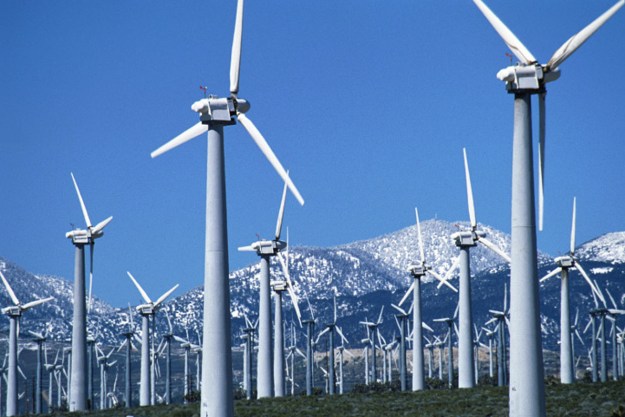Each year, hundreds of billions of gallons of usable water are lost to the atmosphere, often billowing out of the giant smokestacks that have become a symbol of humanity’s energy excess.
But this fall, the rooftop of the Central Utility Power Plant at the Massachusetts Institute of Technology (MIT) will be home to an innovative new tool that could someday help make power plants more sustainable.
Developed by a team of MIT engineers, the system improves on the design of “fog harps,” devices that act as nets to capture water vapor when air flows through them. In a study published last week in the journal Science Advances, the researchers show how this system may allow power plants to function more sustainably and fight water scarcity by recycling otherwise wasted water.
Power plants consume a remarkable amount of water to keep them cool. In the United States, 39 percent of all the fresh water pulled from lakes, river, and reservoirs is set aside for this purpose.
“Power plants are one of the largest users of water, mostly for their cooling needs,” Maher Damak, a mechanical engineering PhD candidate at MIT and co-author of the paper, told Digital Trends. “Most plants use cooling towers that make water evaporate to cool down the plant and lose large amounts of vapor that can be seen as a plume coming out of these towers. We have invented a new method to efficiently capture large amounts of that fresh water so it can be reused.”
The technology invented by Damak and his colleagues makes significant improvements on the design of fog harps, net-like devices made of plastic or wire mesh that capture and collect droplets of water as air passes through. But fog harps typically collect just one to three percent of passing vapor, because the airflow — and thus the water molecules — tends to veer around the wires and through the holes.
When the MIT researchers zapped the mesh with a beam of electrically charged particles in the lab, the mesh turned into a sort of magnet, attracting the vapor toward the wires and causing droplets to form in more abundance. The droplets then dripped down the mesh and collected in a pan below. The researchers estimate that, with their system installed, power plants could capture 20 to 30 percent of the water lost from their cooling towers.
“The product will be retrofitted to existing cooling towers in power plants,” Damak said. “It will consist of a dome-shaped mesh that is placed on top of cooling towers just above charging electrodes. The water from cooling tower plumes will collect on the mesh and drip to the periphery, where it can be collected and sent back to the power plant cooling cycle, or to other uses.”
This recycled water may then be used to cool the power plant, piped to water-scarce regions, or offer substitutes for desalination systems.
Moving forward, the researchers will test if their technology works at scale. They’re creating a full-scale version to be installed at MIT’s Central Utility Power Plant, which provides much of the campus’ electricity, and plan to install at other locations through their startup, Infinite Cooling.
Editors' Recommendations
- A more powerful Mac Mini is in the works, and could be coming soon
- Apple’s rumored larger iMac could ship with more powerful M2X processor
- Nvidia Ada Lovelace: Next-gen graphics could be 71% more powerful than RTX 3080
- GM’s Hummer brand could make an unlikely return with electric power
- Zeppelins could make a comeback with this solar-powered airship cargo mover


